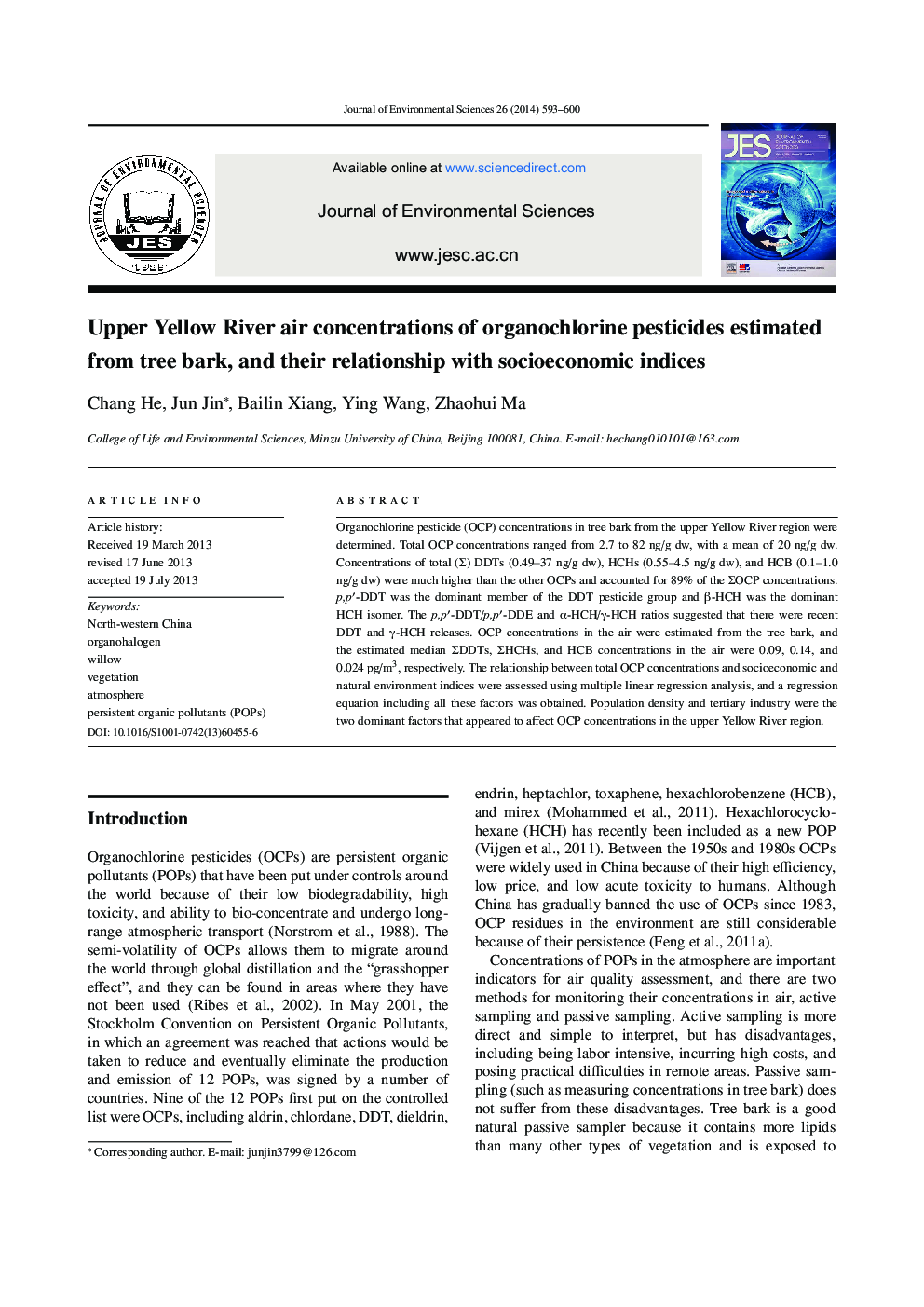| Article ID | Journal | Published Year | Pages | File Type |
|---|---|---|---|---|
| 4454296 | Journal of Environmental Sciences | 2014 | 8 Pages |
Organochlorine pesticide (OCP) concentrations in tree bark from the upper Yellow River region were determined. Total OCP concentrations ranged from 2.7 to 82 ng/g dw, with a mean of 20 ng/g dw. Concentrations of total (Σ) DDTs (0.49–37 ng/g dw), HCHs (0.55–4.5 ng/g dw), and HCB (0.1–1.0 ng/g dw) were much higher than the other OCPs and accounted for 89% of the ΣOCP concentrations. p,p'-DDT was the dominant member of the DDT pesticide group and β-HCH was the dominant HCH isomer. The p,p’-DDT/p,p’-DDE and α-HCH/γ-HCH ratios suggested that there were recent DDT and γ-HCH releases. OCP concentrations in the air were estimated from the tree bark, and the estimated median ΣDDTs, ΣHCHs, and HCB concentrations in the air were 0.09, 0.14, and 0.024 pg/m3, respectively. The relationship between total OCP concentrations and socioeconomic and natural environment indices were assessed using multiple linear regression analysis, and a regression equation including all these factors was obtained. Population density and tertiary industry were the two dominant factors that appeared to affect OCP concentrations in the upper Yellow River region.
